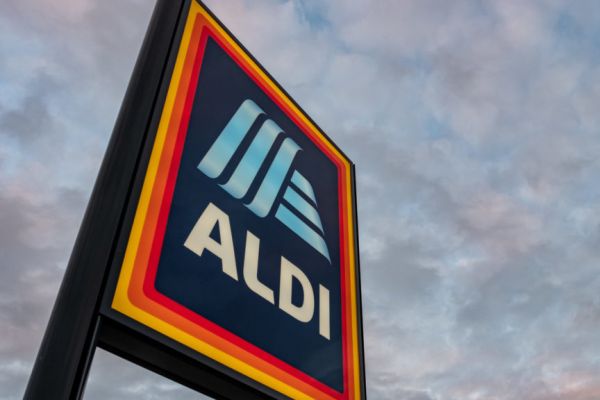It’s not all about challenges – there are opportunities for retailers in the current climate. That is the message from Damian O’Reilly, retail expert and lecturer in management at the School of Retail and Services Management at Technological University Dublin.
Most economic indicators suggest that the economy will continue to grow strongly, resulting in tax revenues remaining buoyant.
VAT returns are 23% higher than the same period in 2021, and while inflation is a factor in tax receipts, the value and volume of non-specialised stores including supermarkets for June 2022 shows an annual percentage change of -0.9% (value) and 8.8% (volume).
This suggests that inflation is maintaining VAT receipts at last year’s levels, as the volume of sales is substantially decreased.
The unemployment rate is 4.2% – another positive indicator of the health of the economy.
However, despite the good indicators, people at the lower end of the economic spectrum, and many on middle incomes, will experience difficulties with continued increases in energy costs.
Continuing supply chain problems and rising input and ingredients costs have forced many major retailers to reduce margins to maintain market share. The result is increasing speculation on the future of the economy, and consumer sentiment in particular.
The most recent KBC Consumer Sentiment Index (July 2022) showed a four-point decline from June and stands at 53.7.
While June 2022 showed an unexpected increase, five of the last six months have shown a decline in consumer sentiment.
The Consumer Sentiment Index in July suggests underlying apprehensions surrounding increases in both energy and weekly grocery shopping bills.
These concerns, coupled with potential ECB rate increases, are making Irish consumers uneasy about managing household finances in the coming months.
Approximately 50% of consumers will ‘now or shortly [July to December] experience severe pressure on their household finances’.
On 4 July, the Bank of England forecast that the UK would fall into recession in the last quarter of this year, and for 2023.
This, coupled with forecasted consumer price inflation of 13% per year, when the energy price cap is lifted in October, will further feed the current negative sentiment in Ireland.
Inflation And Retail
It is becoming increasingly evident that the Consumer Price Index (CPI) increases, and especially energy increases, are having a significant impact on retailing in Ireland.
According to the Central Statistics Office (CSO), figures for June 2022 show that prices for consumer goods and services have increased by 9.1% year on year – the largest annual increase for 38 years.
The main drivers of the change were household energy costs, with the cost of home heating oil up by 115%, electricity up by more than 40%, and gas increasing by 57%. Transport costs also increased in June, with diesel prices increasing by more than 50% and petrol increasing by 43%.
Both of these trends (inflation and energy costs) are affecting retail in contrasting ways. Inflation has led to a distinct change in consumer behaviour and shopping patterns.
The most recent CSO figures show an annual increase of 6.8% in food prices and 4.8% in non-alcoholic beverages. Many of the staple take-home shopping items have increased far above the overall change.
Bread has increased by 11.4% (partially as a result of Brexit, as we import the majority of our flour for baking from the UK).
Pasta products increased by 12.3%, poultry by 13.6%, beef and pork by more than 8%, fresh whole milk by 15.9%, cheese by 9.1%, butter by 14.7%, vegetable fats by 22.7% (partially as a result of the ongoing crisis in Ukraine), and coffee by 7.0%.
More Private Label, Fewer Shopping Trips
The increase in prices has resulted in consumers purchasing more private-/own-label products and reducing their shopping frequency. According to Kantar (July 2022), branded products’ share of the grocery outlay has decreased from 49.6% to 47.6%.
This equates to a decrease of €72 million spent on branded goods year on year.
This will give a short-term boost to Aldi and Lidl.
While consumers are trading down from national brands, they are increasingly looking for value and quality, resulting in increased purchases of the Tesco Finest and Lidl Deluxe ranges.
The report also suggests that ‘consumers are now making two fewer trips to the supermarket on average compared to this time last year’.
Overall, the rise in grocery prices has resulted in less discretionary spending and households having to manage on tighter budgets, which contributes to fewer trips to restaurants and takeaways.
The increase in fuel costs has contributed to fewer shopping missions to supermarkets, as consumers are now consolidating shopping trips.
Another effect of rising fuel/petrol costs is increased footfall for convenience outlets like Spar and Centra, coupled with a greater desire to buy local produce.
Supporting Local
The issue of buying local will come more into focus over the coming years.
In Ireland in 2020, we imported 75,000 tonnes of potatoes, 20,000 tonnes of carrots, 83,000 tonnes of cheese and 25,000 tonnes of tomatoes – along with 61 million litres of water!
In 2020, €9 billion worth of food and beverages were imported – an increase of 70% from 2010.
These are considerable numbers, and while we have to import certain foodstuffs, there is the opportunity for local producers to engage in import substitution.
Supporting local producers is essential, and a mindset that needs to be addressed by consumers.
Irish produce may be priced higher, as the market is relatively small, but, in my opinion, we need to be prepared to pay for locally sustainable produce.
Future generations are looking for more sustainability in their choices of brands and retailers.
Supermarkets need to be passionate about their customers’ health and offer choices that suit household budgets.
Dietary trends and plant-based foods have increased over the past year, and this is an opportunity for retailers to engage with suppliers in new-product innovation.
Covid restrictions last Christmas meant that many families did not get together. The year 2022 will be different, with people spending more time together becoming a trend.
Higher inflation and energy prices will see a reduction in present-giving, but more ‘secret Santa’ gifts.
As a result, the focus of spending this year will be on food and entertainment – a bonus for grocery retailers.
Rightsizing
One of the consequences of online grocery retailing is the need for bricks-and-mortar retailers to engage in rightsizing.
Extra space – especially in the ambient product area – will result in supermarkets and grocery stores delivering more experiential shopping trips.
Retailers need to have the ideal retail footprint to deliver the maximum impact for the target market.
We have seen the consequences of Brexit, Covid-19, the disruption to supply chains resulting in a knock-on effect on the cost of shipping goods, Russia’s invasion of Ukraine, and, more recently, the cost-of-living crisis, with soaring inflation.
These external influences have altered retail and consumer behaviour.
In general, retailers have responded quickly to these interruptions and disruptions, and many have developed strategies to deal with a new hybrid retail model.
Escalating food prices are causing the most concern for consumers.
At the same time, input costs for retailers continue to climb – transportation, fuel costs, and upward pressure on wages, which is resulting in lower margins – with limited capacity to pass these costs on in store.
As discretionary spend decreases, shoppers will increase their purchase of private-label brands. Retailers will have to respond by giving shoppers better incentives to remain loyal to their brands.
Also, hybrid working is having an impact on the online retail spend. Online spend in supermarkets decreased to 2.5% in June 2022 (CSO), demonstrating that people want the in-store experience in Ireland.
Gen Z And Sustainable Brands
Generation Z (Gen Z) is the group of people born between the mid- to late 1990s and the early 2010s.
The eldest cohort in Gen Z are in their early twenties and are joining the workforce, and in the coming years, they will be the biggest spending group.
Recent reports suggest that the Gen Z generation prefers to purchase sustainable brands (branded products and retailers), and 90% of Gen Z are willing to pay up to 10% more to get sustainable products.
The global pandemic has resulted in many people rethinking their consumption patterns and the impact their decisions have on their health and the health of the planet.
Gen Z will make purchase decisions based on personal, societal and environmental values.
They have remained loyal to their values and are also educating and influencing prior generations.
Brands and retail brands have to resonate with Gen Z.
Retailers who ‘speak their language’ will benefit by converting them into loyal customers.
They are known as the TikTok generation, and they are constantly checking product information on their smartphones.
They are also the generation of influencers, and are constantly posting reviews on products and in-store experiences.
The Next Frontier
We will soon witness the increasing influence of Gen Z and the digitisation of retail.
With instant access to information and rapid advances in technology, Gen Z will redefine the way stores will interact with consumers.
Technologies including artificial intelligence (AI), virtual reality (VR) and augmented reality (AR) are already being utilised and trialled in stores.
Payment options are changing – payment methods and quicker digital checkout options will become more prevalent.
Marks & Spencer launched an on-the-spot digital payment solution that allows staff to select shoppers buying a small number of items to process payments with handheld devices.
Gen Z are the digital generation, but they are focused on reducing their carbon footprint, eliminating waste, and supporting localisation.
Retailers need to convey their sustainability agenda to Gen Z, as they are willing to pay a premium (10% extra) for locally sourced and sustainable products.
This is the next frontier in grocery retailing.
© 2022 Checkout – your source for the latest Irish retail news. Article by Damian O’Reilly. For more retail news, click here. Click subscribe to sign up for the Checkout print edition.






